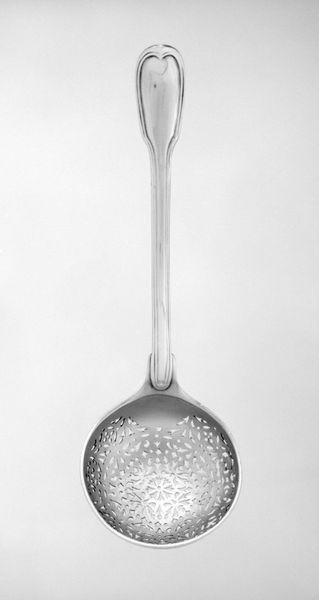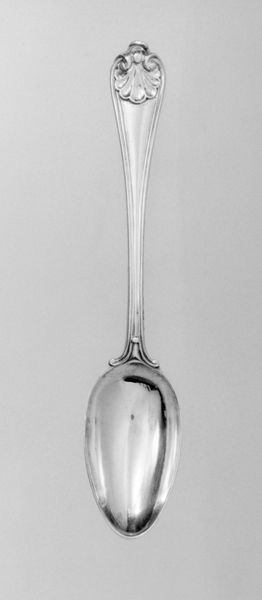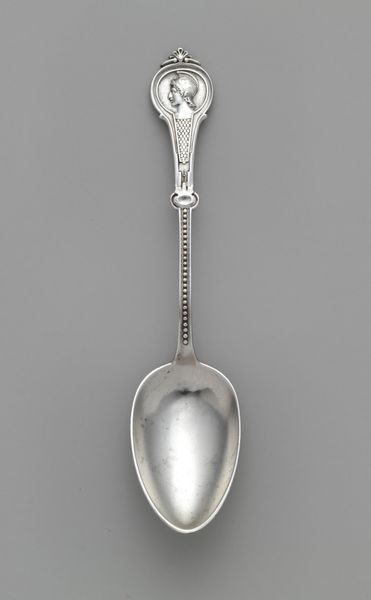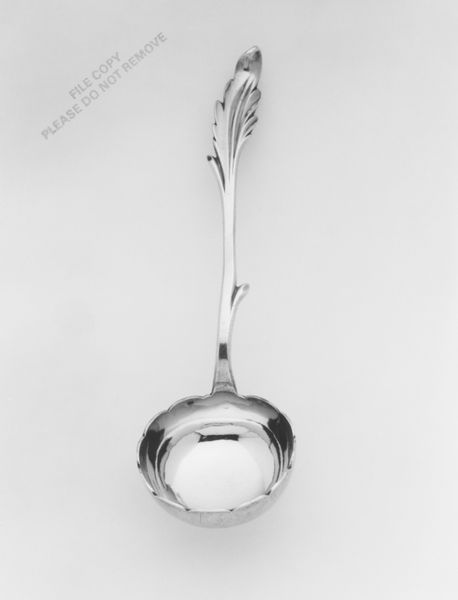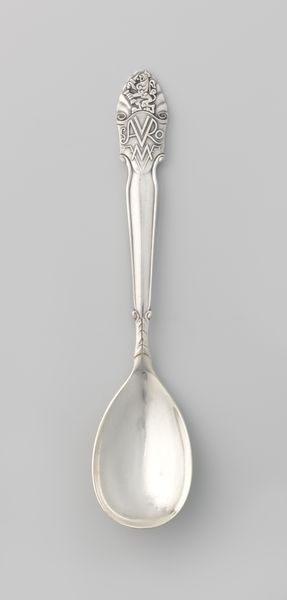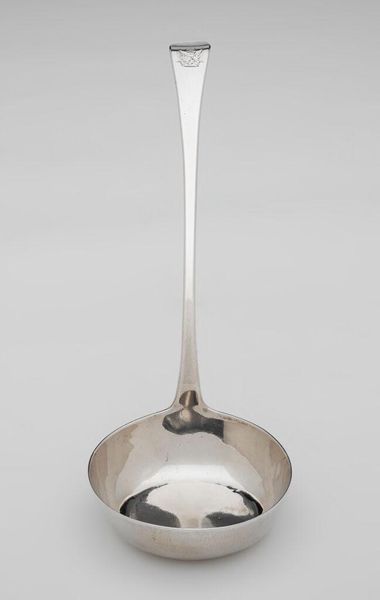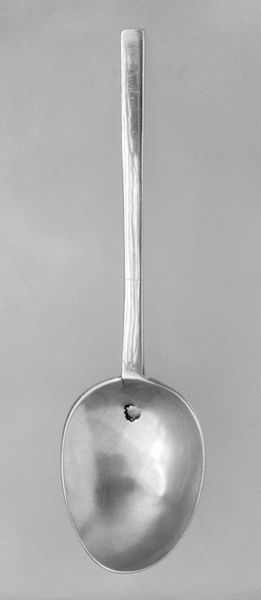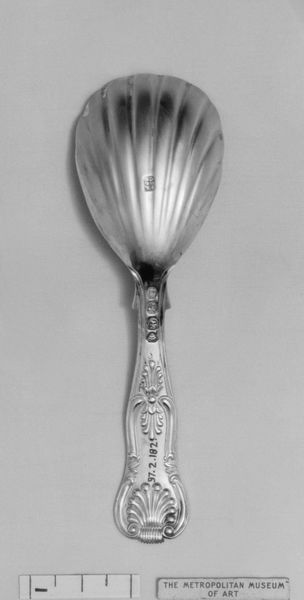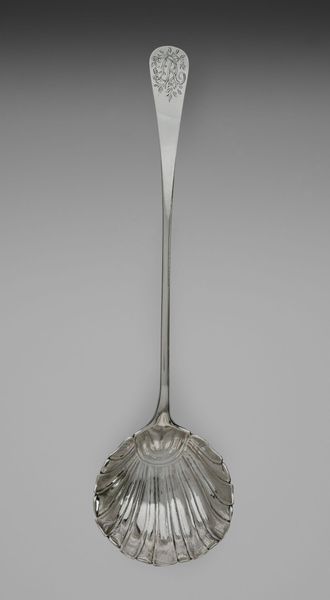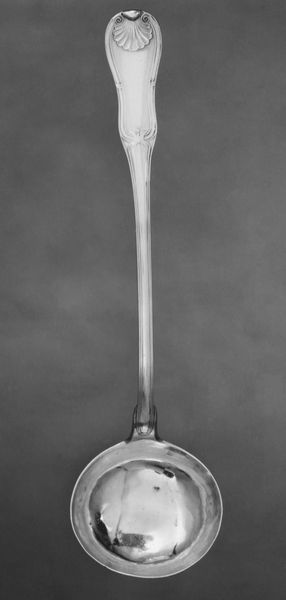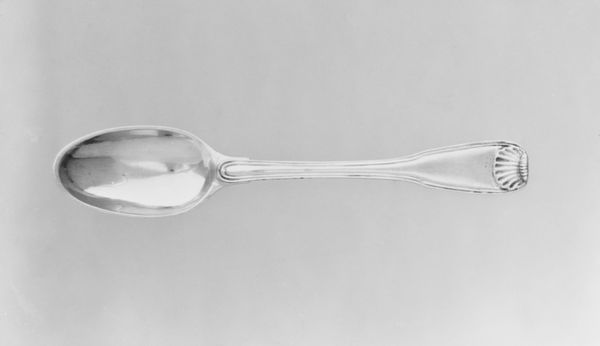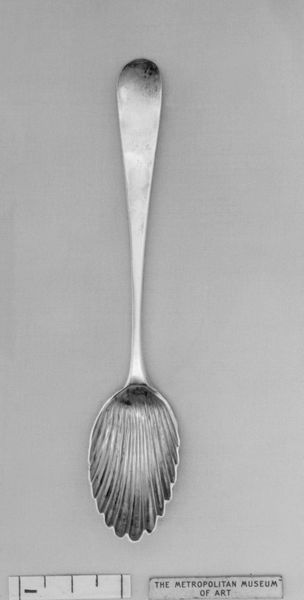
Dimensions: Length: 8 7/8 in. (22.5 cm)
Copyright: Public Domain
Editor: Here we have a serving spoon crafted in silver, dating back to around 1784-1785, made by Jean-Etienne Langlois. Its sleekness almost contradicts its ornate detailing at the tip. What does this object tell us, beyond just its functional purpose? Curator: This spoon speaks volumes about the social and cultural landscape of its time. In late 18th century France, even utilitarian objects became canvases for expressing wealth and status. The Baroque style, though nearing its end, still held sway in decorative arts. Consider how this spoon, likely used by the aristocracy, reflects their values of refinement and elaborate display, even in the most private settings. Do you think it's naive to assign this kind of symbolic value to silverware? Editor: No, not at all. It's just...a spoon! Yet it embodies an entire class structure through material and form. It makes you wonder, were these decorative objects simply tools for a certain social class to distinguish itself from the others? Curator: Precisely. Silver itself was a valuable commodity, but the intricate design and craftsmanship amplified its worth, marking it as something accessible only to the elite. We can analyze the political imagery that might have been subtly embedded in its decorative elements and also how a museum today impacts our perception of its importance. Is it displayed next to a Fabergé egg, perhaps? This elevates it even further. Editor: I see your point. Displaying it almost validates its existence beyond utility. Thanks for shedding some light on the historical and social contexts. I never would've considered the serving spoon as an actual political symbol before. Curator: That’s the beauty of studying art history. Even the simplest object can reflect complex socio-political forces. Hopefully now, spoons will never seem mundane again.
Comments
No comments
Be the first to comment and join the conversation on the ultimate creative platform.
